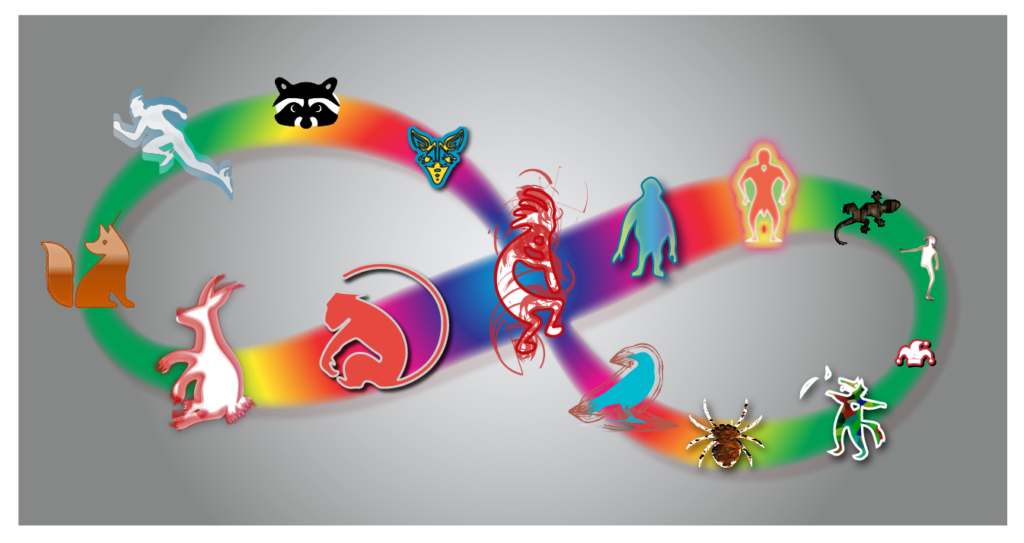From left to right:
Reynard the fox, Mercury, Nanabozho, Tanuki, Sun Wukong, Huehuecoyotl, Kokopelli, Raven, Tokoloshe, Anansi, Papa Legba, Wisakedjak, Blue tongue lizard, Till Eulenspiegel, Saci-Perere
The phrase “collective unconscious” seems like a neat concept but not a literally true thing. Where would it exist? Are we supposed to believe in a spiritual dimension that we all have a drinking straw stuck into? To me, the collective unconscious (CU) is more like a shared language module, distributed to each of us at birth. It’s like Windows accessories, included in every installation.
The archetypes of the CU are words and phrases from this shared language module. They are unique icons with a consistent meaning and their arrangement tells the story. Some icons are always protagonists, the listener’s POV along the tracks. Some archetypes represent a challenge, motivation or temptation. Some provide structure. The background is created through the placement of the initial icons. This becomes the substrate of expectation and context. Once we know the background, we probably know a lot about where we’re going and what we will encounter. Think of how much you know about these two stories:
Once there was a girl living in a deep, dark forest. She was beautiful and kind and worked hard to care for her Mother who was very sick…
Jack the foolish donkey lived on a farm where he was well cared for by the kind farmers, yet he dreamed of seeing the bazaars and palaces of faraway lands…
I bet you can tell me the “keyframes” of each story; the salient encounters or events. You can tell me the general outcome and upshot of each one and how they eventually bring the story home to its origin but at a higher level. The only thing you can’t tell me is whether it was a bear or an ogre this time around if you follow my meaning. Certainly, there are junctures along the way where the story might break off to create an alternative tale but with enough patience, we could flow-chart the alternatives as well.
The icons are consistent, regardless of language or culture. They are the essentials of our stories, and stories are the foundation of everything we understand, not in an intellectual way, but as this particular human self.
I am planning a series of articles on the collective unconscious, archetypes, and symbols. Trickster is an example of an essential role required in some tales. There must be a wild and funny, -think-outside-the-box, winning through cleverness character in these stories. Bugs Bunny, (in his cartoon days, not his later career as a corporate spokesman) was a perfect modern trickster.
Around the world, people create tricksters in the image of their culture. It’s like when Shakespeare plays are not staged as if in Elizabethan England but on a 20th-century battlefield, or the highest executive floors of a corporate skyscraper. The setting is ever-changing, the story is eternal.
It appears that some fairy tales have been in circulation for 6000 years. That is solidly within the Neolithic period. There is every chance that a story you read to your child at bedtime was also told to an excited child before history was invented.
